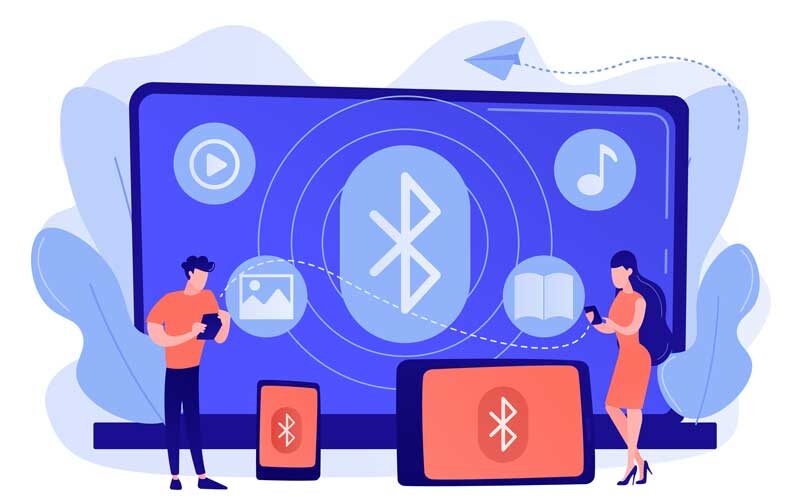WHAT IS BLUETOOTH?
Establishing wireless connections and facilitating communication between electronic devices are made easier and more effective by the use of Bluetooth technology. Wireless speakers, earbuds, and various Internet of Things devices are just a few of the numerous applications it has. It is a crucial component of how current cellphones connect to the outside world. Notably, Bluetooth is renowned for its power efficiency, allowing products like wireless earphones to deliver nearly 6 hours of nonstop music while weighing only 4.2 grams (Bluetooth, 2023) (Apple, n.d.).
How the term ‘BLUETOOTH’ came about
The name “Bluetooth” has an interesting historical origin. During discussions about this innovative technology, Jim Kardach from Intel proposed the codename “Bluetooth.” It was chosen as the name of King Harald Bluetooth, a prominent figure from the past who reigned over Denmark and Norway from 958 to around 985–966. Also, Jim quoted, “King Harald Bluetooth… was famous for uniting Scandinavia just as we intended to unite the PC and cellular industries with a short-range wireless link (Bluetooth, 2019; Wikipedia, 2020).
How does Bluetooth work?
Similar to other forms of communication like Wi-Fi and cellular networks, Bluetooth relies on radio frequency to facilitate data transfer between devices. However, it stands out because of adaptive frequency hopping, which discards 72 channels by rapidly switching frequencies at a rate of about 1600 times per second. Due to this dynamic frequency modification, Bluetooth is now a dependable and secure wireless communication solution (Branch Education, 2021) (Franklin and Pollette, 2000). It also decreases interference from other devices and improves security.
THE HISTORY OF BLUETOOTH
When Dr. Nils Rydbeck, the Chief Technology Officer of Ericsson Mobile in Sweden, first unveiled Bluetooth in 1989, it was a revolutionary technology. Bluetooth has undergone substantial development since its conception and has become a crucial component of many industries, having an impact on consumer electronics, healthcare, the automobile industry, and home automation. Bluetooth’s function as a low-power communication solution will continue to be crucial with the ever-expanding Internet of Things (IoT), enabling seamless interactions among an ever-growing variety of smart devices. The future of wireless connectivity and communication will be shaped by current innovations and the creation of new Bluetooth standards, creating a world of seamless, interconnected gadgets (Wikipedia, 2020; Bluetooth, 2019; Bluetooth, 2023).
Reference list
Apple (n.d.). AirPods (3rd generation). [online] Apple. Available at: https://www.apple.com/airpods-3rd-generation/ [Accessed 29 July 2023].
Bluetooth (2019). Origin of the Name | Bluetooth Technology Website. [online] Bluetooth Technology Website. Available at: https://www.bluetooth.com/about-us/bluetooth-origin/ [Accessed 27 July 2023].
Bluetooth (2023). Bluetooth Technology Overview. [online] Bluetooth® Technology Website. Available at: https://www.bluetooth.com/learn-about-bluetooth/tech-overview/ [Accessed 27 July 2023].
Branch education (2021). How does Bluetooth Work? [online] www.youtube.com. Available at: https://youtu.be/1I1vxu5qIUM [Accessed 28 July 2023].
Franklin, C. and Pollette, C. (2000). How Bluetooth Works. [online] HowStuffWorks. Available at: https://electronics.howstuffworks.com/bluetooth.htm [Accessed 28 July 2023].
Wikipedia. (2020). Bluetooth. [online] Available at: https://en.wikipedia.org/wiki/Bluetooth#History [Accessed 27 July 2023].
